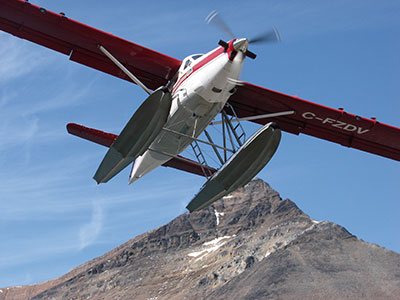
Features
Operations
On Final: FOA takes flight
The intent of the founding members of the Floatplane Operators Association (FOA) was to deliver positive results to commercial floatplane operators and the travelling public.
May 6, 2013 By Jim Hartwell
The intent of the founding members of the Floatplane Operators Association (FOA) was to deliver positive results to commercial floatplane operators and the travelling public. The mandate put forth by the membership was safety advancements and progressive ideas in the form of best practices.
 |
|
| The public needs to know that efforts are being made to ensure their enjoyment and safety as we strive to make improvements to our equipment, our methodology and our outlook. Photo: Floatplane Operators Association
|
As key words that we use as a point of focus and a motivator alike, “best practices” can mean many things to many people. Our first objective is to make it understood what the term best practices means to the FOA and the public, and more importantly, what we are going to do to make best practices work.
Here is what we have done so far to make best practices work:
- Formed this association, creating common ground where all operators with a vested interest in improving upon safety can meet and discuss best practices. We have taken techniques and ideas for improving safety from each operator and are starting to see these practices shared and implemented.
- Those improvements include a consensus to implement PFDs whereby the FOA membership is working to develop procedures and products to ensure that in an emergency situation, all passengers exit the aircraft with a PFD.
- Advocated egress training for crew members. This is now offered by most operators.
- Installed ergonomic door latches and exit points in members’ aircraft for more efficient egress.
- Encouraged operators to use satellite-tracking systems, leading to improved flight monitoring of departures, in-flights and landings. These check-in calls with pilots and dispatch, flight followers, and monitors are now cycled on a more frequent and consistent basis.
- Implemented back-up protocols related to specific flights and scenarios. Most operators are now using GPS navigation and tracking equipment.
- Improved load monitoring, segmented weights and actual weights. Each member creates and records a database for determining average weight per passengers, etc.
- Participated in the Senate Standing Committee examining light station de-staffing. This issue is of great concern to members who rely on weather reports from these light stations.
- Invited presentations to the FOA board from the B.C. Forest Safety Council and other groups, to show best practices and safety cultures in other organizations.
- Organized presentations to the FOA board by manufacturers of safety products such as luminescent exit strips and placarding, windscreen water repellents, etc.
- Assigned a board member to be each FOA member’s point of contact to engage with the association, and to share and disseminate concerns, best practices and other ideas.
- Solicited membership by means of a questionnaire that will be used to create a baseline of statistics to determine where we can best focus our efforts with best practices. We are also compiling a list of members’ best practices to be posted on the FOA’s website
- Compiled a list of active webcams that is accessible to everyone through the FOA website, providing a further weather gathering tool for the operators.
- Exploring an online and printed manual containing local area information. The contents would come from the local area membership.
- Participating in the Canadian Aviation Regulation Advisory Council (CARAC) process, especially where there are changes to the regulations that will impact floatplane operators.
The FOA also sees a need to continue educating the public about the safety, convenience and logic of commercial floatplane travel in British Columbia. The FOA believes one of the best ways to accomplish these goals is through the continued creation and implementation of best practices.
Jim Hartwell is the administrative executive assistant of the Floatplane Operators Association.